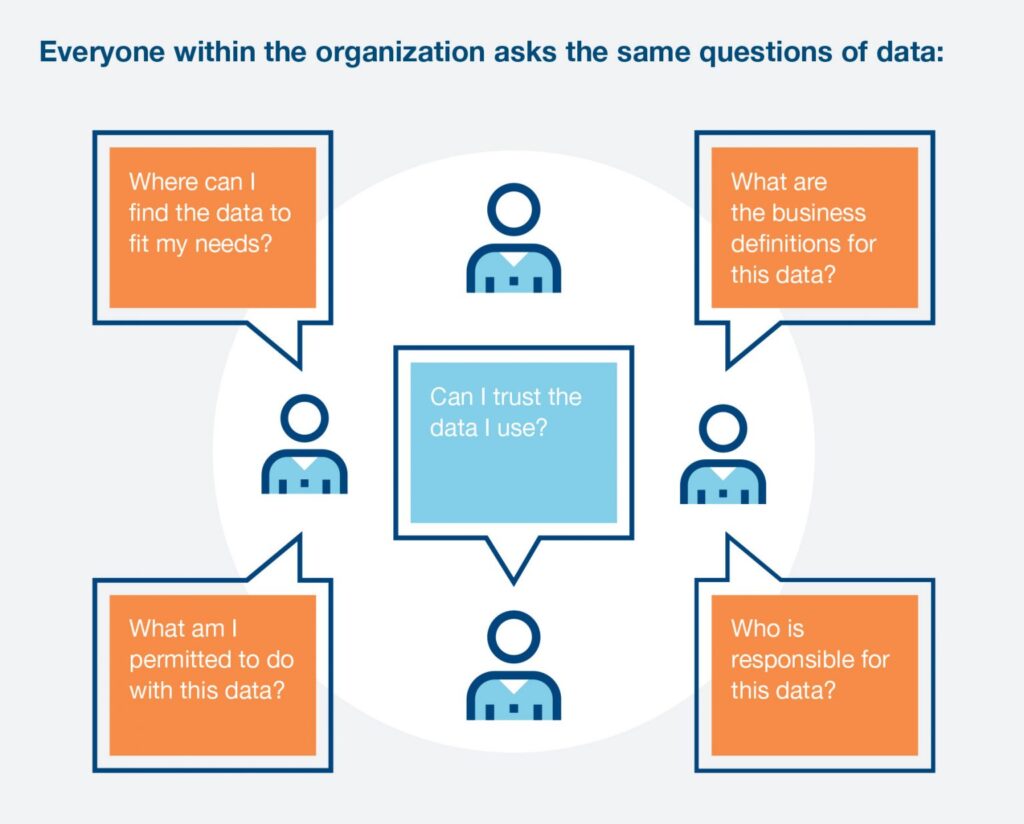In professional sports, organizational culture is often as important as the players on the team. A disciplined, supportive culture can sustain success even when a team loses a talented player or has a talent roster that’s not as strong as their opponent’s. The converse is also true, however: teams can be mired in mediocrity for years, or even decades, due to a corrosive culture, no matter how much money management invests in talent.
This isn’t true only in sports, though. In the realm of data governance, culture drives success as much as the technology itself. When a company commits to implementing data governance across the organization, it becomes a daily practice and a part of the company DNA. But data governance must be incorporated into the existing organizational culture of the business at large and of the departments that own the data, or it’s destined to wither or even fail altogether. This article examines the cultural side of data governance and why it is so integral to success.
The Culture of Data Governance
Data governance is the practice of understanding organizational data, curating data assets, ensuring data quality, and establishing processes to find, expand, cultivate, and use that data in a systematic and controlled manner. Data governance strategy sets the rules by which companies conduct data management, which includes functions like data quality and integration, metadata management, and business analytics.
Companies increasingly realize the importance of data governance, especially once they start asking where good or bad data comes from. As a result, they’re adopting tools and implementing processes to establish business-wide data governance best practices. However, their success in these efforts rests on adoption and the buy-in of those tasked with carrying it out. That’s why making governance a routine part of corporate culture is so vital.

There is no one-size-fits-all solution for data governance. Company leaders must make an honest assessment of their current culture and ways of working in determining which approach to follow.
Crafting a Data Governance Strategy that Works for Your Business
- Will the data governance initiative be funded? If so, by whom and to what extent? This is vital because unfunded mandates seldom work and only generate resentment.
- How old is the company? Older companies generally tend to move slower and can be more resistant to change.
- How much emphasis does our company place on culture as a whole? If an organization has a clear focus on culture and robust strategies for how it operates and handles change management, data governance usually can be added and accepted fairly readily. By comparison, if a business is more focused on transactions and profitability and places little emphasis on data, it can be difficult to introduce and enforce data governance.
Real-world Example
Your data is your identity and your greatest strategic asset and should be treated as such.
Data Governance Tools and Technology Are Not A Cure-All
In a culture that has discipline, the implementation of new technology is much smoother.
Creating a Shared Vision and Measuring Success of your Data Governance Framework
The lowest level of maturity: simple data quality and system controls. In this scenario, users are forced to care about data even if they do not because they have to begin entering data in standardized ways. In companies that don’t think about or prioritize data, even simple data quality measures can create an immediate positive impact.
Next level: the business moves from data quality to master data management. At this level, the value of data is widely recognized, everyone is operating with the same definitions of data, and data is used to deliver a better customer experience.
An even more mature business: tackling metadata management. At this point on the maturity arc, the greatest value will come from using analytics to gain new insights and build models that create better business outcomes.
Regardless of where a company falls on this maturity scale, data governance remains a bit like the sports metaphor referenced at the start of this examination. By playing to the known strengths of your business and your people, and by being honest about any weaknesses, you can create the best possible data governance playbook — one that’s as unique as the business itself and increases your odds of winning the long game of data governance.
About Infoverity
For more information on Infoverity solutions, contact us today.
